Flat Plate Vs Ribbed Slab Which Uses More Cement
Ripped slab resists shrinking and is less expensive than strengthened rafts and footing slabs. The extended part is known as ribs.
The flat plate is simply a slab of constant thickness supported directly on columns or load bearing walls.

. In conventional slab-beam system the load is transferred from slab to beam and ultimately beam to the column. The main advantage of ribbed floors is the reduction in weight achieved by removing part of concrete below the neutral axis. This includes apartment buildings and hospitals.
Ribbed slabs are made up of wide band beams running between columns with narrow ribs spanning the orthogonal direction. For this flat plate slab systems the minimum slab thicknesses per ACI 318-11 are. Hardy slabs are special types of slabs consisting of hardy bricks placed in a uniform fashion inside it.
Flat Slab Floor System. The load is transferred directly from slab to column in the flat slab. The ideal thickness of waffle slab is 85 to 100 mm with a maximum overall depth of 300 to 600 mm.
The flat slab is easier to construct and requires less formwork. The spacing between the ribs should be in general 20-30 inch. Failure load of 369 psf and was only 85 of the ACI 4fc value.
The thickness of the Flat slab is minimum 8 or 02m. Sunken Slab Post Tension Slab Uses of Flab Slab. Flat plate concrete floor system does not.
Now for the solid slab. They provide a very good form of construction where slab vibration is an issue such as laboratories and hospitals. 606 33 200 33 l.
Ribbed slab system which consists of a series of parallel reinforced concrete T beams framing into reinforced concrete girders. In lieu of detailed calculation for deflections ACI 318 Code gives minimum slab thickness for two-way construction without interior beams in Table 95 c. The main difference between flat slab conventional slab-beam system is that the one is directly supported on the column while another system has a beam for support.
Both slabs failed by punching at an interior column. Flat Slab Concrete slab Sunken Slab Post Tension Slab Conclusion. Post tensioned slabs use high-strength tensioned steel strands to compress the slabs keeping the majority of the concrete in compression.
This is a normal slab used in traditional design. Ribbed and waffle slabs provide a lighter and stiffer slab than an equivalent flat slab reducing the extent of foundations. Solid slabs of uniform thickness can be one-way or two way.
Post tensioned PT slabs are typically flat slabs band beam and slabs or ribbed slabs. Two-Way Flat Plate Concrete Floor System Analysis and Design The concrete floor slab system shown below is for an intermediate floor to be designed considering partition weight 20 psf and unfactored live load 40 psf. A flat plate is every architect interior designer dream because it lets them go wild with partitioning the floor plans and all.
Flat slab is a reinforced concrete slab supported directly by concrete columns without the use of beams. The extended part is known as ribs. They are used where the beam is not required.
The breadth of the beams or ribs in a ribbed slab is typically 110 to 200 mm. Waffle slabs have some advantages over Flat slabs and RCC Slabs which helps us to use the Waffle Slabs. Flat Slabs are used at.
Flat slabs are considered to be faster and more economic than other forms of construction as partition heads do not need to be cut around downstand beams or ribs. This type of slab is generally easy to construct and requires little formwork. This system is one of the most common structural system used in building construction due to the ease and speed of making the formwork as there is a uniform thickness one need a formwork with a flat soffit.
The plain ceiling diffuses the light better and is considered less vulnerable in the case of fire than the traditional beam slab construction. Bubble deck slabs are mostly used in public buildings high rise buildings. 667 30 200 30 l h n in.
Fig1Flat Plate Floor System The important. Bolt Vs Screw What Is Bolt What Is Screws. The spacing between the ribs should be in general 20-30 inch.
This makes this type of floor economical for buildings with a long span with light or moderate loads. Flat Plate Floor System. Flat slabs can be designed with a good surface finish to the soffit allowing exposed soffits to be used.
This is one of the types of concrete slabs. The flat plate is a two-way reinforced concrete framing system utilizing a slab of uniform thickness the simplest of structural shapes. The depth of the hardy bricks is usually at least 200 mm.
5 Issue 04 April-2016 International Journal of Engineering Research Technology IJERT. Advantages of Flat Slab. The flat slab is a two-way reinforced structural system that includes either drop panels or column capitals at columns to resist heavier loads and thus permit longer spans.
Flat slab is defined as one sided or two-sided support system with sheer load of the slab being concentrated on the supporting columns and a square slab called drop panels. The slab is the flange of the beam and the extended part is the web. Flat plate for PCA and U of I tests designed for 70 psf LL and 86 psf DL.
This is typically a reinforced slab supported directly by columns or caps without the use of beams. A waffle slab offers a material significantly more structural stability without using further materials this makes a ribbed slab perfect for large flat areas such as foundations or floors. It is generally a slab surrounded by drop beams.
The loads are directly transferred to the columns. The flat plate floor system is a common floor construction type employed in the construction of the building. Solid slabs are less expensive because they require less thickness however are not a favored solution by.
Ribbed Slab are best suited for flat areas. Flat slabs are most suitable for spans of 6 to 9m and for live loads of 4-7KNm2. The basic aim of this study is to design and show the comparative benefits of Waffle slabs over flat slabs and RCC slabs.
The slab is the flange of the beam and the extended part is the web. This allows exploitation of the buildings thermal mass in the design of. But not less than 5 in Interior Panels.
The hardy bricks are hollow blocks made of concrete. 1 minute A flat plate floor system is a reinforced concrete frame system with a uniform thickness that is supported directly over the columns or the load-bearing walls. They need more formwork than flat plates especially for.
Steel of beam and column for flat slab structure is 8448 and 1548 less than conventional slab structure respectively but quantity and cost of concrete and steel for conventional slab is 4242 less than flat slab. For more detailed definition. The thickness of the flat plate slab is greater than that of the typical RCC two-way slab.
Flat Slabs are used by engineers in many building due to its advantages over other reinforced concrete floor. The ribs are tapered in cross-section in its lower part. A flat slab is a two-way reinforced concrete slab that usually does not have beams and girders and the loads are transferred directly to the supporting concrete columns.
Flat slabs are mostly used in large industrial structures parking garages ramps warehouses tall buildings and hotels. Strains in the top steel at the column face 7 times the yield strain at punching. Ribbed or waffle slab is a slab system which consists of series of parallel reinforced concrete T beams framing into reinforced concrete girders.
From Figure 9 and 10 it is clear that the quantity and cost of steel and concrete for flat slab structure is 158 less than.

Waffle Slab Characteristics Construction Process Advantages And Disadvantages Tech Net Edge
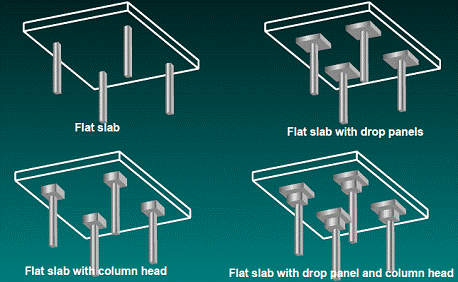
16 Different Types Of Slabs In Construction Where To Use
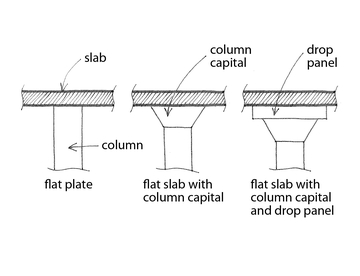
Taxonomy Flat Slab Plate Or Waffle Slab Lfls

A Plan Of The Middle Equivalent Frames Of A Flat Slab Building Download Scientific Diagram
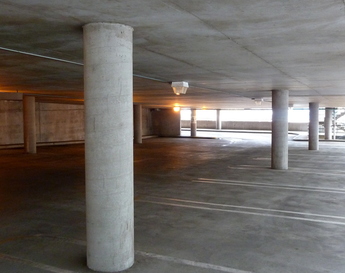
Taxonomy Flat Slab Plate Or Waffle Slab Lfls
Waffle Slab Purpose Uses Advantages And Disadvantages Construction News

Floor Or Slab Systems In Building Features And Types

Waffle Slab Or Ribbed Slab Types Advantages Disadvantages

Building Design And Reinforced Concrete Slab Type

Floor Or Slab Systems In Building Features And Types
What Is Better Ribbed Or Solid Slab One Way Quora
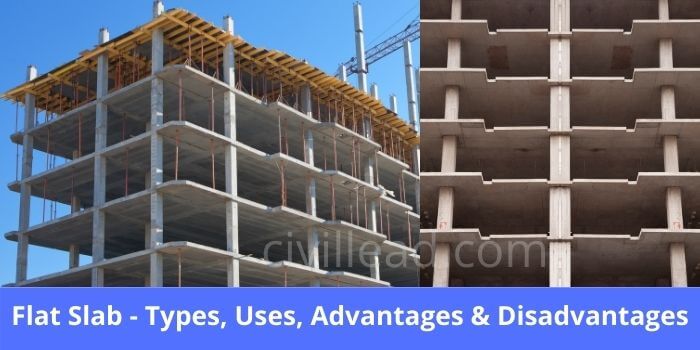
Flat Slab Types Uses Structure Advantages Disadvantages Civil Lead

16 Different Types Of Slabs In Construction Where To Use Slab Construction Types Of Flooring

A Plan Of The Flat Slab Building In Examples 1 And 2 Download Scientific Diagram

Chapter 14 Sitecast Concrete Framing System Flashcards Quizlet
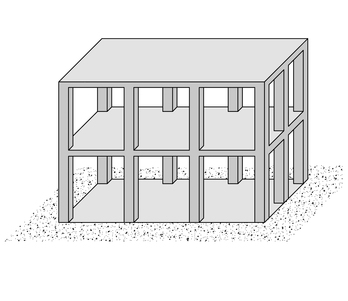
Taxonomy Flat Slab Plate Or Waffle Slab Lfls

Structural Components Of A Reinforced Concrete Building Engineersdaily Free Engineering Database


Comments
Post a Comment